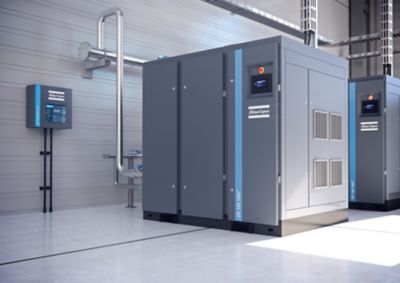The Power of On-Site Nitrogen Generation
March 28, 2024
The demand for on-site nitrogen generation has become increasingly prevalent due to its potential to revolutionize operation efficiency and cost-effectiveness. By eliminating the need for bulk nitrogen deliveries and storage, on-site generators offer unparalleled convenience and control.
What Does a Nitrogen Generator Do?
There are two types of nitrogen generators available: membrane nitrogen generators and nitrogen generators with pressure swing adsorption (PSA). Each generator separates the air into components differently, but both require a compressed air flow to function.
As mentioned in the name, nitrogen generators with pressure swing adsorption operate on the principle of adsorption. This principle comprises of two towers operating continuously in tandem. Each tower contains carbon molecular sieves (CMS), which acts as a magnet, drawing oxygen molecules while allowing nitrogen molecules to pass through. This results in a pure nitrogen stream from the generator.
As one tower adsorbs oxygen, the other undergoes regeneration by releasing pressure. This cycle, lasting approximately 60 seconds, repeats continuously, ensuring continuous nitrogen production of the desired purity. After each cycle, the towers’ functionality switches, with the previously adsorbing tower now undergoing regeneration and vice versa.
As for membrane nitrogen generators, they separate nitrogen from compressed air by allowing molecules to pass through a membrane module at different speeds, retaining only nitrogen. To prevent clogging and maintain efficiency, “exhaust gases” like water, oxygen, and argon are released through a permeate drain in the housing.
Nitrogen Gas vs Liquid Nitrogen: Making the Right Choice
A close examination reveals that gaseous nitrogen has several advantages over its liquid counterparts.
Accessibility, Convenience and Operational Efficiency
In most settings, gaseous nitrogen is more readily available than liquid nitrogen. Producing nitrogen on-site through pressure swing adsorption (PSA) or membrane separation systems eliminates the need to store and transport liquid nitrogen containers. This accessibility enhances convenience and reduces logistical complexities for industries relying on nitrogen. Furthermore, on-site generators ensure a consistent and reliable nitrogen supply, reducing downtime associated with refilling liquid nitrogen tanks or waiting for deliveries.
Safety Considerations
Liquid nitrogen poses certain safety hazards due to its extremely low temperature (-196 °C) and potential for rapid vaporization upon exposure to ambient conditions. Liquid nitrogen handling errors or accidents can cause serious risks such as asphyxiation or severe frostbite. On the other hand, gaseous nitrogen, being stored at ambient temperatures, eliminates these risks associated with handling and storage, posing fewer risks than its liquid counterpart.
Purity Level
Users gain the liberty to produce the right purity level for their application to sidestep overly high purity level, effectively balancing energy usage and costs. This flexibility allows you to produce gas purity that precisely matches the demands of your applications while optimizing resource utilization and financial efficiency.
Cost Efficiency
While the initial investment for on-site nitrogen generators may seem significant, long-term operational costs are typically lower, making it a more cost-efficient option over time. On-site nitrogen generation systems offer greater cost efficiency over time by eliminating recurring expenses associated with purchasing and transporting liquid nitrogen. Moreover, the ability to produce nitrogen on demand minimizes wastage and ensures optimal resource utilization.
Environmental Impact
From an ecological standpoint, gaseous nitrogen represents a more sustainable option than liquid nitrogen. Nitrogen generators reduce carbon emissions associated with transportation and storage.
Operational Efficiency
In industrial settings where continuous nitrogen supply is essential, gaseous nitrogen offers superior operational efficiency. On-site generators ensure a consistent and reliable nitrogen supply, reducing downtime associated with refilling liquid nitrogen tanks or waiting.
Conclusion
In conclusion, Atlas Copco’s on-site nitrogen generators offer unmatched advantages in terms of technology, reliability, customization, support, and cost-effectiveness compared to alternatives on the market. As industries continue to prioritize efficiency, safety, and sustainability, the adoption of on-site nitrogen generators is poised to witness further proliferation in the years to come. This innovative technology unlocks efficiency and provides a sustainable solution for businesses.

